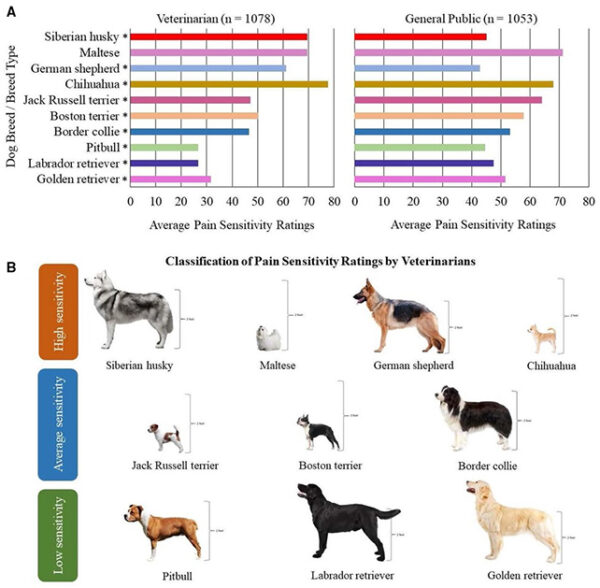Do Dogs Have High Pain Tolerance

Urgent reports are flooding in: are we underestimating canine pain? New research is challenging long-held beliefs about dogs' ability to withstand pain, forcing veterinarians and owners to reconsider pain management strategies.
This article delves into the emerging evidence suggesting that dogs may not possess an inherently high pain tolerance, but rather a deeply ingrained instinct to mask discomfort. Understanding this distinction is critical for ensuring their well-being.
The Myth of Canine Stoicism
For years, the perception has been that dogs are naturally resilient to pain. This assumption often stems from their evolutionary history as predators and pack animals.
The idea was that showing weakness – indicating pain – could make them vulnerable to predators or jeopardize their position within the social hierarchy.
However, modern veterinary science is starting to question this long-held belief.
Mounting Evidence Against High Pain Tolerance
A growing body of research indicates that dogs likely experience pain at similar levels to humans. Dr. Bonnie Sholeen, a veterinary pain management specialist, states, "There's no physiological reason to believe dogs would experience pain less intensely than we do."
Studies using physiological markers such as heart rate variability and cortisol levels have shown significant stress responses in dogs undergoing procedures previously considered only mildly painful. Where this research is occurring spans across various veterinary colleges, from the University of Pennsylvania to the University of California, Davis.
These responses often contradict outward displays of calm, demonstrating that dogs can be experiencing significant pain without exhibiting obvious signs.
Subtle Signs of Pain: What to Look For
Recognizing subtle signs of pain is crucial, as dogs are masters of disguise. Changes in behavior are often the first indicators. When to watch out for these signs is particularly important after surgery, injury, or as dogs age.
These include decreased appetite, reluctance to play or exercise, hiding, excessive licking of a particular area, and changes in sleep patterns. Stiffness, limping, and altered posture can also signal underlying discomfort.
Dr. Alice Villalobos, a renowned veterinary oncologist, emphasizes the importance of "being proactive in managing pain, especially in older dogs, as arthritis and other age-related conditions can significantly impact their quality of life."
Why the Misconception Persists
The misconception about canine pain tolerance likely stems from a combination of factors. Firstly, dogs are adept at masking pain due to their evolutionary programming.
Secondly, humans often misinterpret subtle signs of pain as simply "slowing down" or "getting old." Thirdly, there has been a historical lack of emphasis on pain management in veterinary medicine.
This is now changing, with veterinary schools increasingly incorporating pain management education into their curriculum.
The Role of Veterinarians
Veterinarians play a critical role in accurately assessing and managing pain in dogs. This involves a thorough physical examination, detailed history taking, and the use of pain scoring systems.
What veterinarians are now doing is implementing more comprehensive pain management protocols that include multimodal analgesia, combining different types of pain medication to achieve optimal pain relief with minimal side effects.
They are also increasingly educating owners on how to recognize and report signs of pain in their dogs.
Implications for Owners
The emerging understanding of canine pain tolerance has significant implications for dog owners. Owners need to be more vigilant in observing their dogs for subtle signs of pain and seek veterinary attention promptly.
Who this information is for is every dog owner. How owners can help is by advocating for proactive pain management during veterinary visits, particularly after surgery or injury.
Open communication with veterinarians is essential to ensure that dogs receive appropriate pain relief.
"We need to shift our perspective from assuming dogs don't feel pain to proactively addressing their comfort and well-being," states Dr. Sholeen.
Next Steps and Ongoing Developments
Further research is needed to fully understand the nuances of pain perception in dogs. Studies are underway to develop more objective measures of pain, such as advanced imaging techniques.
When these studies will yield conclusive results remains to be seen, but the momentum is building toward a more comprehensive understanding of canine pain.
The veterinary community is committed to improving pain management practices and ensuring that all dogs receive the care they deserve.


















